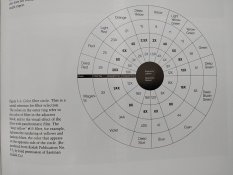sterioma
Member
When I look at the scan, noting that you metered the grasses on the right, they don't look like they're on zone III; that area looks more like zone V.
In the top quote above, if you meter the shadows and want them on zone III you close down two stops. If you meter highlights, you open 2-2 1/2 stops to place the highlights.
Did you misspeak in post #13 as to the process of exposure? Did you really mean you opened two stops?
You are absolutely right, I meant the opposite of what I actually wrote.
I normally use the meter in EV mode and match it with the corresponding EV settings on the hasselblad lens. In this case, according to my notes, the shadows read about 11EV, so I set the lens on 13EV (and then applied thefilter factor, somewhat arbitrarily based on the 8x stamped on the ring and some other sources, of +3 stops).
I have posted a photo of the negative above, which should give a better representation of the shadow areas on the bottom right. My densitometer reads about 0.30 around there, which should be about right for zone III.
Last edited:






 ).
).


